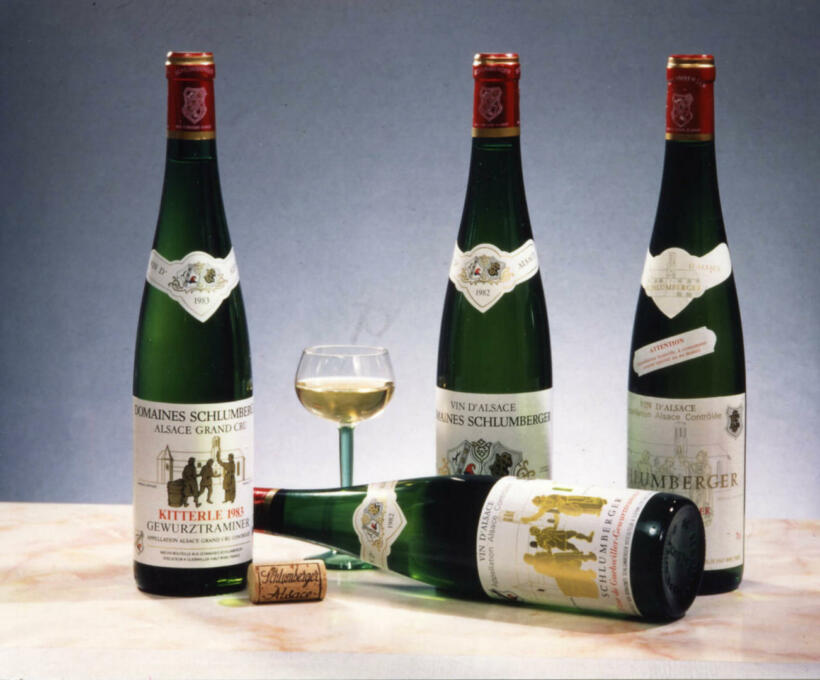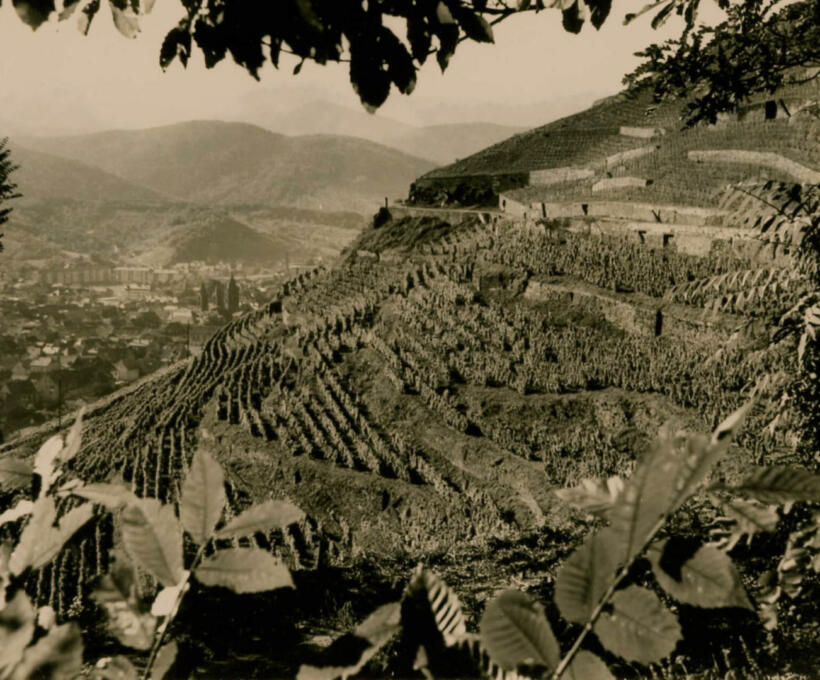50 million years ago, the collapse of the ancient Vosges-Black Forest Massif revealed 2 series of fractures to the north and south, which formed the boundaries of the Rhine Graben. There are thus 3 geological Alsaces:
- The mountains of the Vosges : crystalline soils covered with pink sandstone.
- The Sub Vosges hills : low and round, situated south-southeast, well preserved from erosion and sheltered by the mountains.
- The plain of the Rhine : with a rich soil, ideal for cereals, cabbage and hops.
Vines are best cultivated in the sub-Vosges hills, which form the transition between the wooded mountains of the Vosges and the Rhine plain.
One of the great qualities of the vine is that it is able to succeed wonderfully where nothing else can grow !
It is on the Sub Vosges hills, between the woody mountains and the plain of the Rhine that the land ismost favourable to vine growing . The Alsace vineyard is situated at an altitude of 200 to 360 metres on the breathtaking slopes above Guebwiller and Thann. These are limestone, sandstone or marly-clay soils.
The climate too is very typical, varying with sunny days and rainfalls. Although one of the most northern vineyards of France, it’s also the one where it rains the less (500 to 650 mm per year).
The Vosges mountains make a barrier between Alsace and the interior of France and gives this region its specific sub continental climate with numerous microclimates. The regular warm, sunny autumn helps the long and progressive ripening of the grapes.
South and Southeast exposures are the most favourable. Choice of orientation and position of the terrace planting was motivated not just due to the high level sunshine exposure but also because these stony, sloping hills cannot be used for any other crops.


